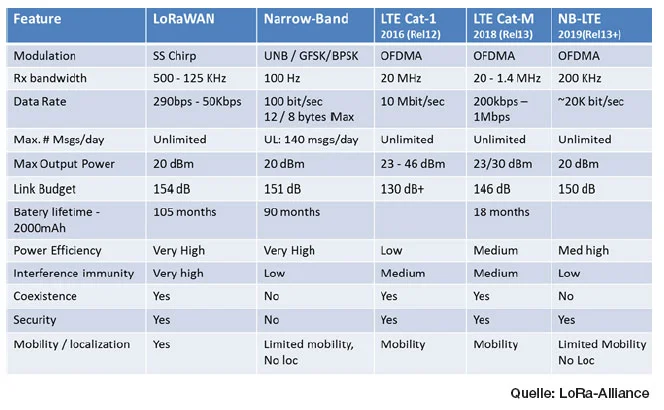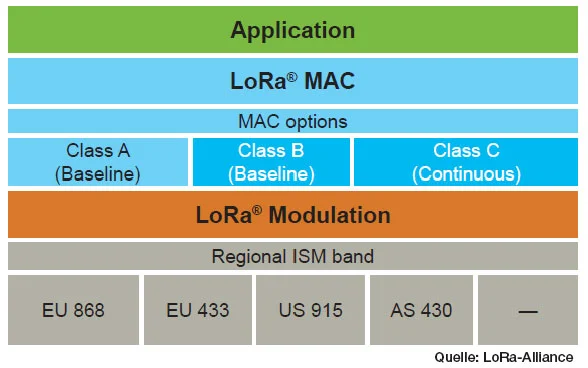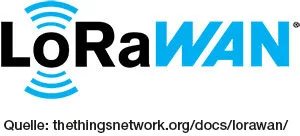
The Long Range Wide Area Network defines a communication protocol and the system architecture for thenetwork, while the LoRa physical layer enables the long-range communication link.
The protocol and network architecture have the greatest impact in determining the battery life of a node, network capacity, quality of service, security and the variety of applications served by the network.
- License-free frequency bands are used worldwide (863-870 MHz, 433 MHz, 902-928 MHz).
- Data transmission is secured by means of authentication and encryption.
- Bi-directional data communication possible between transceiver and Gateway.
- Low energy consumption for data transmission.
- Optional geo-localization.
- Standardization via the LoRa Alliance, which already has over 500 member companies.
Network architecture
Many existing networks use a mesh network architecture. In a mesh network, the individual end nodes relay information from other nodes to increase the communication range and cell size of the network. While this increases range, it also increases complexity, reduces network capacity and reduces battery life as nodes receive and forward information from other nodes that is likely to be irrelevant to them. A long-range star architecture makes the most sense for preserving battery life if a long-range connection can be achieved.
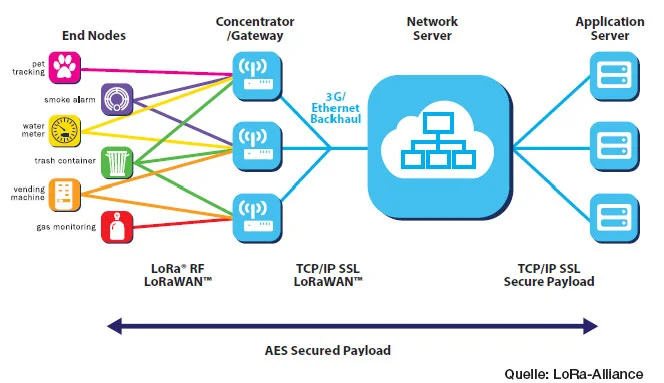
Device classes - not all nodes are the same
End devices serve different applications and have different requirements. To optimize a variety of end-use profiles, LoRaWAN™ uses different device classes. The device classes balance between downlink communication latency in the network and battery life. In a control or actuator application, downlink communication latency is an important factor.
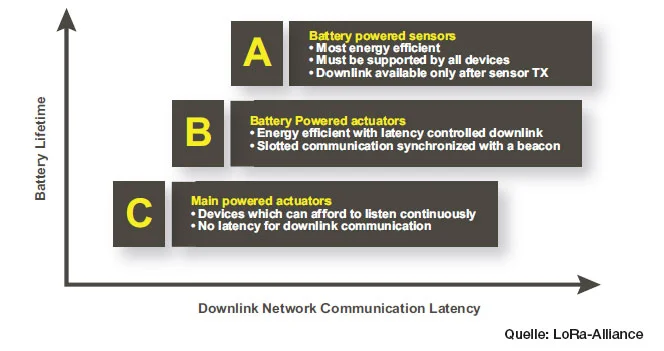
LoRaWAN™ regional differences
The LoRaWAN™ specification varies slightly from region to region based on different regional frequency allocations and regulatory requirements. The LoRaWAN™ specification for Europe and North America is defined, but other regions are still being defined by the technical committee. Joining the LoRa® Alliance as a contributing member and participating in the technical committee can bring significant benefits to companies seeking solutions for the Asian market.
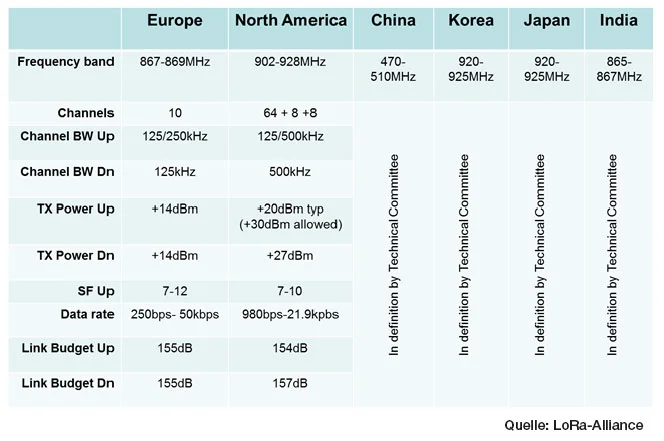
Comparison of LPWAN technologies
In the IoT sector there is a lot of activity looking at LPWAN options both from a technical comparison but also from a business model perspective. LPWAN networks are now being deployed because there is a strong business case that the immediate and the cost of deploying the network in unlicensed bands requires much less capital than even a 3G software upgrade. The questions that should be answered to compare different LPWAN technologies are:
- Flexibility to achieve a wide variety of applications
- Is the communication protocol secure?
- Technical aspects - range, capacity, two-way communication, robustness against interference
- Cost of network deployment, cost of end node BOM, cost of battery (largest BOM contribution)
- Ecosystem of solution providers for flexible business models
- Availability of end products to ensure ROI of network deployment
- Strength of the ecosystem to ensure quality and longevity of the solution
